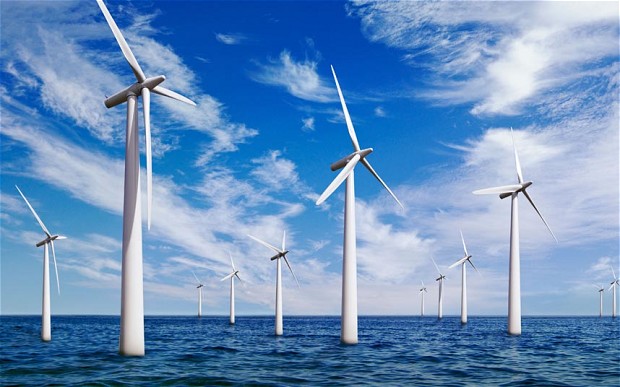“This is a win for the environment, the economy and the people of the Commonwealth,” said Massachusetts house representative Thomas Golden, Jr. He was celebrating Massachusetts’s historic energy bill which committed the state to 1,600 megawatts of offshore wind energy generation by 2027. At that scale, wind energy could power 240,000 homes statewide.
Despite Golden’s excitement, the bill was also met with a storm of criticism. “More can and should be done to lower carbon dioxide emissions. This plan, may be the most expensive way to get there I’ve seen,” the New England Power Generators Association’s president Dan Dolan wrote in response. There are many concerns surrounding this energy bill, specifically about utility rate increases and more generally about the reliability of wind power.
The National Renewable Energy Laboratory (NREL) has answers for both Representative Golden and Mr. Dolan. The NREL is a national laboratory funded by the United States Department of Energy that researches renewable energy and energy efficiency. In a new study they modeled a full year of eastern electric grid operations with increasing amounts of renewable energy generation, up to 30% of wind and solar. NREL published their results this summer in the Eastern Renewable Generation Integration Study (ERGIS). Their research shows that the eastern grid can accommodate far more renewable energy than expected, however to comprehend their findings it is important to first understand the basics of the electric grid.
Massachusetts is part of a regional electric grid that connects all states east of the Rockies. The electric grid is made up of electricity generators, transmission lines, and control centers. Like train tracks linking major hubs, transmission lines connect generators to the homes needing electricity while the control centers coordinate the electric grid, like the operators of railroad switches. The NREL studied this system with a model that includes more than 5,600 electricity generators and 60,000 transmission lines.
The ERGIS study revealed three key lessons that suggest the goals of Massachusetts’s energy bill are more achievable than critics claim and give suggestions for best implementation.
First, more multi-regional coordination through transmission lines and enhanced communication of control centers will best allow for the utilization of renewable energy generation. A scenario with added transmission lines had more than 50% more exchange of electricity between regions of the grid. The study also found that daily flows of power were more frequent with increased wind and solar generation. By applying this lesson to the energy bill, offshore wind won’t just benefit Massachusetts. Homes in New Hampshire could benefit from Massachusetts wind if excess clean energy is diverted instead of wasted. But this endeavor would require new transmission lines and increased coordination of the grid, potentially through innovative smart grid technology.
Second, the existing electric grid can effectively balance renewable and non-renewable sources of energy surprisingly well, even under the most challenging conditions. For example, spring poses unique challenges for integrating renewables. Wind is especially variable during these months. In the summertime, the challenge is different. The high demand for electricity, especially for air conditioning, requires a constant base load which wind cannot always meet. Despite these concerns, the ERGIS study revealed the grid was successful in balancing production with demand through coordination and regional interchange. So when wind generation was over-predicted, the real time management of the grid allowed for supplementing with conventional sources. More renewable energy sources required more system coordination, but did not result in a deficient energy generation.
Third, increasing renewable energy generation has economic benefits and reduces pollution. Production costs were lower by a third in the 30% renewable energy generation scenario compared to the benchmark scenario. Additionally, CO2 emissions decreased by 33% as the renewable energy sources primarily displaced fossil fuels. Pocketbooks and polar bears agree, renewable energy is ready for wide-scale implementation.
The ERGIS study counters Dolan’s concerns about price and reinforces Golden’s excitement surrounding Massachusetts’s energy bill. The electric grid is ready to integrate renewable energy. The wind has always been blowing, but finally Massachusetts is going to harness it.









